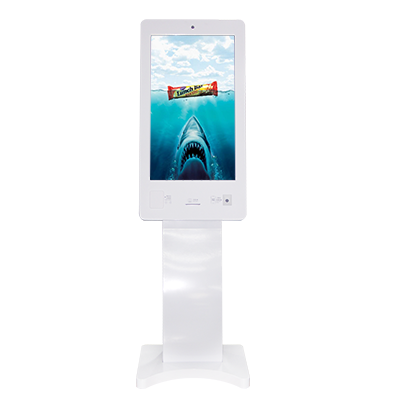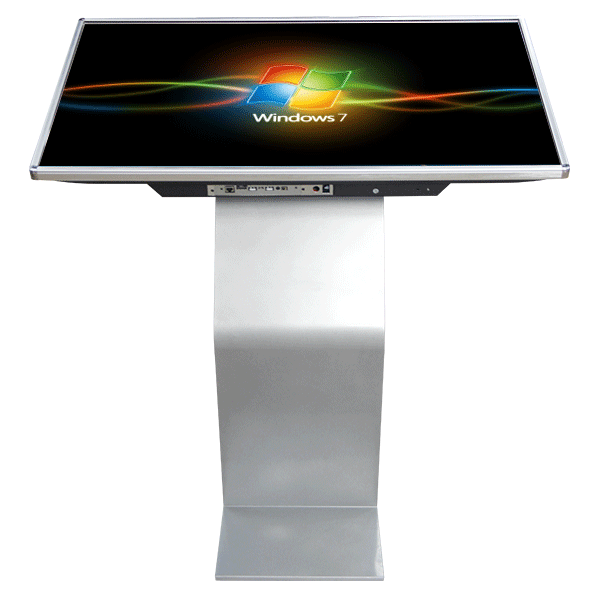What are the benefits of using digital signage in schools?
Published:2023-12-11Views:684

With the rapid development of technology and the advent of the digital age, digital signage has gradually become an indispensable part of modern campuses.
Essentially, school digital signage is a cost-effective alternative to outdated printed signage.
With its unique advantages, digital signage is changing the way information is disseminated on campus, bringing students a more convenient, efficient and interesting campus life experience. This article will explore the benefits of installing digital signage in schools and how to effectively use digital signage to improve campus management and service levels.
How do schools use digital signage?

From digital library signage and event promotion to campus wayfinding displays, digital signage for educational institutions can take many forms. Here are some innovative applications of digital signage in schools:
School entrance: School entrance is a common application place for digital signage. Here, digital signage can display welcome messages, school news, important announcements, event schedules, etc. so that students and parents can access important information.
Classrooms and laboratories: Digital signage can be used in classrooms and laboratories to provide course information, teaching materials, experimental procedures and precautions, etc. Digital signage can also be used to display students’ homework and results and promote communication and interaction between teachers and students.
Library: The library is an important place for students to study and read. Digital signage can be used to display library opening hours, borrowing rules, new book recommendations, reading activities and other information to facilitate students to understand the library's resources and services.
Canteens and Dining Halls: School canteens and dining halls are places where students gather. Digital signage can be used to display menus, prices, food safety information, dietary recommendations, etc., to help students choose appropriate dishes and understand food safety knowledge.
Student dormitories and dormitory areas: Student dormitories and dormitory areas are important places where students live. Digital signage can be used to display dormitory rules, safety tips, hygiene standards, etc. to help students better adapt to dormitory life.
Gymnasium and sports fields: Gymnasiums and sports fields are important places for students to carry out physical activities and exercise. Digital signage can be used to display sports event information, fitness guides, exercise tips, etc., to help students better understand sports activities and exercise-related knowledge.
Art Center and Concert Hall: The school art center and concert hall are important places for students to perform and appreciate art. Digital signage can be used to display performance information, program lists, artist introductions, etc., helping students better understand information about art performances and concerts.
Benefits of Digital Signage in Schools
In the evolving education landscape, the integration of technology can play a key role in transforming the learning environment, making processes more efficient and creating a strong sense of community. Digital signage as a means of communication has made great strides in transforming conventional displays into innovative tools for interactive education ecosystems. Here are the most important benefits of digital signage in schools and educational institutions

1. Increase student participation
Digital signage, once seen as a distraction in the classroom, has now transformed into an innovative tool for increasing student engagement. Make classroom teaching more lively and interesting by integrating interactive elements such as videos, maps, charts, puzzles or quizzes into your courses.
Beyond the classroom, campus digital signage can play an even greater role. Whether welcoming new classmates, celebrating special days, or showcasing the outstanding achievements of individuals or teams, digital signage can enhance the cohesion of a community and allow us to feel the power of the collective at all times.
2. Inspiration and Encouragement
Using digital signage to display inspirational quotes, praise students for their outstanding performance, or even replay the highlights of the event can effectively improve students' morale and stimulate their enthusiasm for learning.
3. Simplify communication
Traditional communication methods such as posters and bulletin boards are gradually being replaced by digital signage. It provides a more convenient and efficient way to communicate, whether it is sending notifications, sharing information, or publishing real-time messages, it can be easily achieved.
4. Instant information sharing
Digital signage can serve as an interactive bulletin board, providing instant information sharing. Whether it is exam arrangements, rules and regulations, or real-time news from the principal, it can be communicated to every student, teacher and parent as soon as possible.
5. Flexible customization and release
A user-friendly digital signage CMS allows you to easily customize and publish engaging content in minutes. Whether you use an existing template or create your own layout, it's easy to do. What's more, cloud-based solutions allow you to control all your screen content remotely from one place.
6. Improve decision support
Digital signage can display various data information on campus in real time and provide decision-making support for school leaders. For example, it displays key information such as student population statistics and course schedules to help leaders make more informed decisions.
7. Environmental protection and energy saving
Digital signage does not pollute the environment and can be recycled, reducing waste generation and pressure on the environment. At the same time, it can also realize environmental protection functions such as automatic power on and off, energy-saving mode, etc.
8. Enhance digital development
Digital signage can collect and analyze user data to better understand user needs and provide personalized services. For example, by analyzing students’ viewing habits and interests, more suitable learning resources can be recommended for students.

9. Optimize teaching methods
Digital signage can be used as a teaching tool, such as displaying electronic textbooks, course materials, etc. At the same time, personalized display can be carried out according to the students' learning progress and needs, so as to better meet the students' learning needs.
As the functions of digital signage continue to expand and enrich. In the future, digital signage will become an indispensable part of schools, playing a more important role in improving teaching quality, enhancing student participation and creating a good campus cultural atmosphere.
























































.png)














